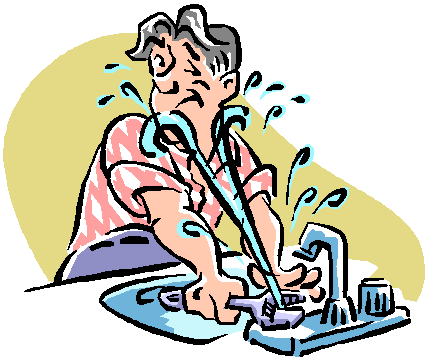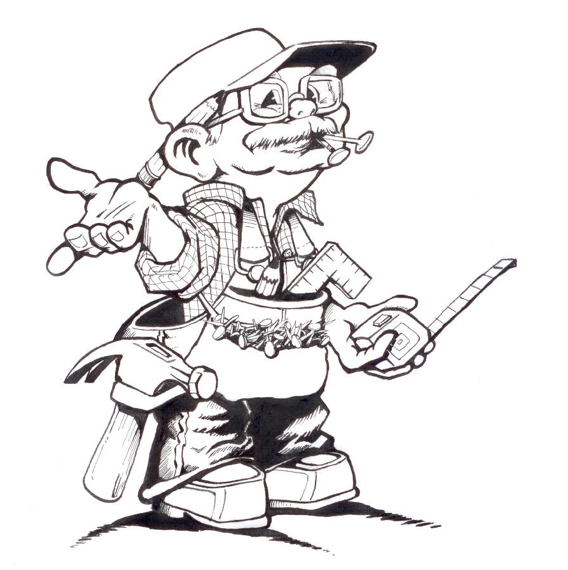Your Fall Home Maintenance Checklist
Fall is here and you should use the time to enjoy the cool weather outdoors and take care of housekeeping chores before winter arrives.
You should tackle any needed maintenance before the weather gets too cold and, if you live in a cold-weather area, you could use the time to improve the energy efficiency of your home as well as take proactive measures to prevent damage from any winter storms that may pass through.
To help you along the way, we’ve created a handy checklist for you to follow:
Chore 1: Clean gutters and downspouts
Once most of the leaves have fallen from your trees, you should get up on a ladder and clean out your gutters and downspouts. If you feel you’re afraid you may fall, ask a more capable family member or hire someone to do it for you.
It’s important that you clear out your gutters of any debris or items that can impede water flow during rains. Clogged gutters during rainstorms can cause water to pool and damage your roof or siding.
Chore 2: Make exterior repairs
Well before winter arrives, you should walk around your property and look for any signs of damage to the roof, siding, and foundation of your home.
For a good view of the roof, you may want to consider getting a closer look when you are cleaning out your rain gutters as some damage may be difficult to detect from the ground. If you see any issue, like missing shingles or dry rot in your siding, repair it before winter weather can exacerbate the problem.
Also, if you see any gaps or holes, seal them to keep mice or other pests from entering your home. Fill small holes and cover any larger gaps securely with heavy-duty hardware cloth to keep the wildlife outdoors.
Chore 3: Shut off exterior faucets and store hoses
If you live in an area with cold winter weather, you may want to take steps to protect your pipes from freezing temperatures by shutting off water to exterior faucets before the weather dips below freezing.
Drain hoses and store them indoors as well, as you will likely not need to run them in the winter. It is important to know where the shutoff valves are for plumbing features. If pipes do freeze, homeowners must turn off the water as quickly as possible to prevent a burst.
Chore 4: Check weather-stripping
Inspect the weather-stripping around your doors and windows. If it is cracking, brittle, torn, frayed or hanging loose, you should remove it and replace it. Weather-stripping around the frames of windows and doors can keep the warm air in on cold days and reduce your home heating costs.
Add door sweeps to the base of drafty doors to keep heat in and cold air out of the home.
Chore 5: Clean your chimney
If you have a chimney, you should schedule a time to have it inspected and cleaned before you start burning wood in your fireplace during the winter. It takes only a small accumulation of creosote glazing to create the potential for a chimney fire. Creosote is a highly flammable substance that builds up inside a chimney or liner as a result of burning wood.
Other venting systems connected to furnaces and stoves should also be cleaned on a regular basis to maintain safe operations. While you’re at it, be sure to replace or clean filters in your vents. Ensure any heating units are professionally serviced and inspected.
Chore 6: Inspect walkways
The sidewalk in front of the home should be inspected for any dangerous cracks. To minimize the risk of falls, handrails on outdoor stairs should be checked and repaired if necessary. It is especially important to do this if people come to the house often because falls are a common source of liability claims against homeowners.
Check your coverage
If you did any home renovations this past summer, your kids went off to college or you’ve purchased any new and expensive winter toys, like snowmobiles, you should revisit your coverage with us.
If you renovated your home, you may not be sufficiently insured. It is important to keep insurance coverage updated in accordance with the value of the home and any added improvements.
Also, if you’ve purchased an expensive winter item like a snowmobile, additional coverage may be needed. High-end snowmobiles often require coverage beyond what homeowners already have.
Finally, if you have a child who recently left for college, it is important to think about making sure they have renter’s insurance to cover thefts or other events that may destroy their possessions.

